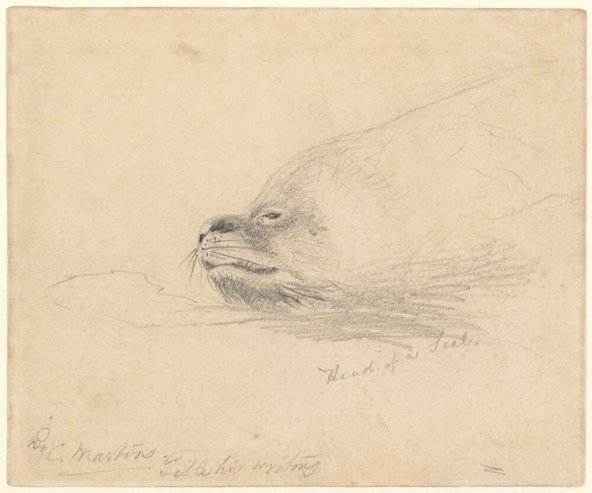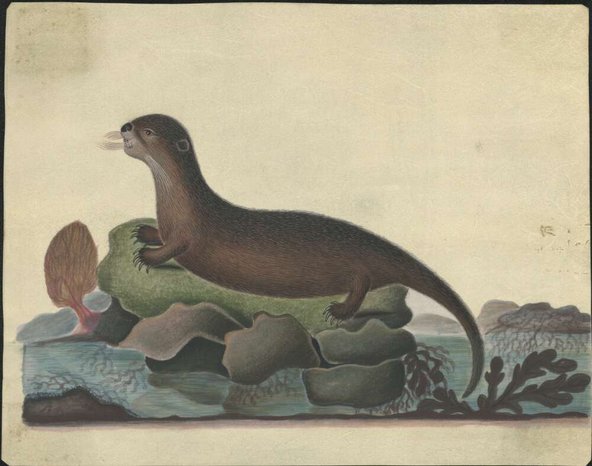Sujit Sivasundaram is Professor of World History at the University of Cambridge and Fellow in History at Gonville and Caius College, Cambridge. He was born and educated in Sri Lanka and has degrees in History and Philosophy of Science from the University of Cambridge. He is a leading historian specialising in world history, especially the Pacific and Indian oceans and their islands in the eighteenth and nineteenth centuries; and also environmental history, the history of race, imperial history and history of science. He has taught at the LSE and held visiting positions in Paris, Singapore, Sydney and Munich. He was awarded a Philip Leverhulme Prize for History in 2012. Waves Across the South: A New History of Revolution and Empire is his third book. It was awarded the British Academy Book Prize in 2021. He has also served as Sackler Caird Fellow at the National Maritime Museum and is currently President of the Pacific Circle, a group of scholars devoted to the study of knowledge and environment across the Indian and Pacific Oceans. He was editor of The Historical Journal and serves on various editorial boards, including for ‘Past and Present’.

Waves Across the South was written over a series of years, and in that period two things became much clearer. First, the need to transform our institutions, our ideas and our contexts of intellectual work to contest and reverse the racial and imperial violence of the past. In keeping with that critical spirit, I begin this short essay by advising Aboriginal readers that it contains information about deceased ancestors. Second, is the need to respond to the climate emergency. This essay is written in the midst of a pandemic which itself as I have argued elsewhere is related to the environmental crisis and to colonial human–animal relations.1 It is with such a footing too that I return to Waves Across the South.
What does the age of revolutions mean for a seal in southern waters? This may seem a bizarre question: the age of revolutions is usually cast as a pivotal moment in human history. On some tellings, it saw the consolidation of modern human rights, a system of nation states and even new modes of human subjectivity. The story of this age, as told to schoolchildren, runs across the American Revolution, the French Revolution, the Industrial Revolution and only sometimes the Haitian Revolution and the Latin American independence movements. Waves Across the South aimed to recentre the Indian and Pacific Oceans and Indigenous peoples and their waters in the Euro-Atlantic narrative of the age of revolutions. Yet this era, given its dramatic conflicts and their associated modes of surveillance, plunder, commercialisation and war, also saw profound changes in how humans and nature engaged with each other.2 Swimming with the agile and amphibian seal takes us on yet new itineraries which lead into our present.

Take the Bass Strait for instance. It is the stretch of sea between mainland Australia and Tasmania. Fur seals predominate here. Their dexterity is particularly evident in how they move between land and water for food and also to cool themselves.3 This is one reason why the islands and rocky outcrops of this coastline make such a perfect habitat. The way seals live in a specific ecology is well illustrated in an image from the 1840s, likely from Australia and New Zealand, ‘Seal on rocks’. Seals depend on fish and molluscs for sustenance. Sharks count as predators. Despite the image’s romanticism, it dates from the era just after horrific over-exploitation in the Bass Strait. For instance, between 1780 and 1830, according to one estimate, seven million seals were killed across the globe.4 Despite this violence, seal populations did not disappear. In the Bass Strait itself, populations eventually recovered. Seal traders shifted the frontier of human/seal conflict to new islands across the Tasman World. The seal rush began in the Bass Strait from the 1790s, moved to Foveaux Strait, south of the South Island of Aotearoa/New Zealand, around 1810; it then shifted to various sub-Antarctic islands and back again to Foveaux Strait in the 1820s before declining.5 It is only possible to speculate on how seals responded to this shifting complex by migration. The men involved, by the way, included agents shaped by the age of revolutions: for instance, there is the account of Amasa Delano’s sealing in the Bass Strait in A Narrative of Voyages and Travels in the Northern and Southern Hemispheres (1817). He fought in the American Revolution and has been described as embodying ‘all the possibilities and limits of that revolution’.6
Capitalist expansion was not simply about the dispersal and settlement of traders or the new market in land or land-based patriotism in this era; it was also about the conversion of marine creatures to tradable and globalised numbers.
This ecology is now vulnerable to rising sea levels and storm surges. These risks create problems for seal pups at a critical moment of maturation, when they can be washed away from the shore. This is compounded by the constrained habitat patterns: the Bass Strait now hosts thirteen breeding sites, of which two account for more than half of the new seal pups in a given year. Thinking back to the age of revolutions, that period’s interest in knowledge and data gathering created new understandings of creatures like seals far from Europe. Popular understandings of settlement colonisation in Australia and Aotearoa/New Zealand usually feature sheep and cows. But a fuller genealogy runs from seals and whales, and from dogs, who were vital to the colonisation of Tasmania, to sheep and cows. Plundering the creatures of the sea, in an age linked with 'pirates', set a template for land-based agronomy. The seal trade, as others have argued, was perhaps an early vector of modern European capitalism in the Tasman World. One might add that it was an early vector of an oil economy too which had plural origins in various places of the world.7

Yet even if the transformations in capitalist, frontier-driven and militarised exploitation of nature by Europeans need stressing, this is not simply a story of the rolling out of European understandings of seals, born out of the new disciplines of science around 1800. As Waves Across the South documented, building on the insights of other scholars, Aboriginal women lived with sealers and sealers relied on their skills of hunting seals in extraordinary ways in the Bass Strait.8 James Kelly of Hobart, sealer, sandalwood trader and whaler, gave a first-hand account of what he saw. Aboriginal women imitated seals and lay alongside them, then attacked and killed them and swam with the dead weight of the creatures. Indeed, it is now understood that Aboriginal Tasmanian women were expert divers and swimmers; biographies of Indigenous women who conducted incredible work at sea are now emerging.9 It has recently been noted that for Aboriginal Tasmanians, ‘so direct was the link between seals and homes that women placed seals’ flippers in hollows beneath their huts’.10 The origins of colonial sealing must include these prior ways of engaging nature which were gendered differently. European and specifically British imperialists in this space, enacted a counter-revolution. They took Indigenous peoples captive and also took hold of their understandings and skills, by muting their voices and by unleashing a horrific genocide on Tasmania directed towards human beings who were cast as animals, ‘hunted’ and ‘rounded up’. Human remains were collected for science. In this way, new scientific understandings of the South in the age of revolutions led into the opposite of what they promised to achieve.
To challenge this historically dramatic but never fully fatal reconfiguration of nature and what it means to be human, it is vital to know more about Aboriginal and Indigenous understandings of nature.
Newspapers of the era provide detailed descriptions of the ways in which the European project of classifying, demarcating and scaling up the use of nature was distinct from how Aboriginal women operated. Seals were turned into numbers of skins and numbers of caskets of oil in ships arriving from the Bass Strait and New Zealand in today’s Sydney. If Tasmania saw an animalisation of humans, its north shore in particular, saw the seal disaggregated into brute supply. Compare these two extracts from the Sydney Gazette, first, from the early seal rush, and second, from the later era which saw the trade decline:
1803: From the advantageous situation of Port Jackson [Sydney], there can be little doubt that the Islands in Bass’ Strait might have been a constant source of enterprise and emolument, properly managed… there are now a number of parties constantly kept upon the different islands, skinning and boiling; they mostly, if not altogether upon shares, are anxious to procure as many furs as possible; to do which, they indiscriminately hunt down all ages and sexes…11
Also in 1803, the newspaper reported on the arrival of ‘307 Bengal cows in excellent condition’ in Sydney on ‘the largest ship that has ever entered this port’.12
1831: The numerous islands of these seas abound in an eminent degree with seals, and it has hitherto been the usual custom with our seals, just to knock the animal on the head, and remove the skin, leaving the flesh behind as useless, but they should remember that the oil which may be with very little labour, expressed therefrom, is superior in quality to that of the black whale, and fetches from £5 to £8 a ton more in the London market than that commodity.13
These extracts speak of the desire over time, in keeping with the winds of political change, to reform and govern a trade which was out of control. But they also speak to how plunder set the context for capitalism and how plunder as undertaken by groups of Europeans was not constrained by geography. Seal oil from the Bass Strait flowed into London.
To find our way out of the climate emergency, it is vital to think with creatures like seals and to understand the environmental dynamics of a period such as the age of revolutions. Warfare was directed to nature too and human/human and human/nature conflicts happened side by side. Scientific reason, one of the supposed triumphs of the age of revolutions, could be used by imperialists. They adopted existent practices, skills and ways of thought within their science. Capitalist expansion was not simply about the dispersal and settlement of traders or the new market in land or land-based patriotism in this era; it was also about the conversion of marine creatures to tradable and globalised numbers. In the waves across the south, animals persevered through and resisted the onslaught.
To challenge this historically dramatic but never fully fatal reconfiguration of nature and what it means to be human, it is vital to know more about Aboriginal and Indigenous understandings of nature. The romanticism of the period’s artists hides the violence directed to humans as well as seals. We need to reanimate nature and bridge the gap between humans and other creatures. This would be fitting as a way of following Aboriginal peoples’ ways of thought. It would ensure that the violence against Indigenous peoples is not lost even as seals become terraqueous players rather than fur and oil in history.